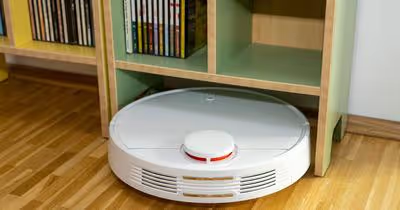Table of Contents
Components of a Multi-Channel Home Theater System
There are several components that you will need in order to have a functioning home theater system. Let's take a look at some of the most important components:
A TV or Projector
This is the cornerstone of any home theater system. Without a TV or projector, you will not be able to watch movies or television shows. You will need a high-quality television or projector in order to enjoy your content to the fullest.
Audio/Video Receiver
This component allows you to connect all of your other components together. It also amplifies the audio signal so that you can enjoy surround sound.
Speakers
You will need at least five speakers in order to enjoy surround sound. However, you may want to invest in more speakers depending on the size of your room and your personal preferences. These speakers should be placed around the room in order to create the best possible sound experience.
A Blu-Ray Player or Streaming Device
In order to watch movies and TV shows, you will need either a Blu-Ray player or a streaming device such as a Roku or Amazon Fire Stick.
Cables and Wires
In order to connect all of your components together, you will need cables and wires. Make sure to buy from a reputable electronics store.
Types of Multi-Channel Home Theater Systems
Now that we have looked at the components of a multi-channel home theater system, let's take a look at the different types of multi-channel home theatre systems that are available:
2.0 Stereo System
A 2.0 stereo system is a sound system that consists of two speakers. The term "2.0" refers to the fact that the system has two channels, one for each speaker. While 2.0 stereo systems are commonly used in home entertainment systems, they can also be found in cars and other vehicles. Compared to systems with more speakers, 2.0 stereo systems are relatively simple and inexpensive to set up.
2.1 Stereo System
A 2.1 stereo system consists of two speakers and a subwoofer. The two speakers are responsible for reproducing the highs and mids, while the subwoofer reproduces the low frequencies. This type of system is well-suited for small to medium-sized rooms, and it can provide a significant upgrade over a basic two-speaker setup. In addition, a 2.1 system is typically more affordable than a surround sound system, making it a good option for budget-conscious shoppers.
3.1 Multi-Channel Home Theater System
A 3.1 multi-channel home theater system is a type of audio system that includes three main channels and one subwoofer channel. The three main channels are typically left, right, and center, while the subwoofer channel provides bass sound. Most 3.1 systems also include surround sound speakers, which are placed around the room to create a more immersive sound experience. While not as common as 5.1 or 7.1 systems, 3.1 systems can still provide an excellent home theater experience.
5.1 Multi-Channel Home Theater System
A 5.1 multi-channel home theater system typically consists of five main speakers (left, center, right, left surround, and right surround) and a subwoofer. The speakers are placed around the room according to where they will produce the best sound. For example, the left and right speakers are placed to the left and right of the television, while the center speaker is placed directly above or below the television. The surround speakers are placed at the back of the room, pointed towards the listening area. The subwoofer is typically placed in the corner of the room, where it can produce powerful bass without taking up too much space.
6.1 Multi-Channel Home Theater System
A 6.1 multi-channel home theater system is a surround sound system that utilizes six channels of audio reproduction plus one subwoofer channel for low-frequency effects. The six channels are typically arranged as three front channels, two rear channels, and one center channel. This configuration allows for a more realistic sonic experience when watching movies or listening to music.
7.1 Multi-Channel Home Theater System
A 7.1 home theater system provides immersive surround sound for a more realistic movie-watching experience. The seven channels are arranged left, center, right, left surround, right surround, LFE (low-frequency effects), and front Presence. The front Presence channel gives the listener a sense of location and dimensionality in the front row of the theater.
Multi-Channel Home Theater Systems: Pros
There are several benefits to investing in a multi-channel home theatre system, including:
High-Quality Sound
One of the biggest benefits of a multi-channel system is the high-quality sound it produces. With multiple speakers, each playing a different frequency range, you can experience rich, full-bodied sound that brings movies and music to life.
Improved Immersion
Another benefit of a multi-channel system is the increased immersion it provides. Surround sound systems create a more realistic listening experience by placing speakers around the room and pointing them in different directions. This allows sounds to come at you from all angles, making you feel as if you are right in the middle of the action.
Increased Flexibility
A multi-channel home theater system also offers greater flexibility than a traditional stereo system. With multiple speakers, you can place them in different parts of the room to create the perfect listening experience. You can also add or remove speakers as needed, depending on the size of the room and your budget.
Multi-Channel Home Theater Systems: Cons
There are a few drawbacks to consider before investing in a multi-channel home theatre system, including:
Cost
One of the biggest disadvantages of a multi-channel system is the cost. Surround sound systems typically cost more than traditional stereo systems, and they often require additional equipment, such as amplifiers and speaker stands. In addition, you may need to hire an electrician to install wiring for surround sound speakers.
Complexity
Another downside of a multi-channel system is its complexity. With multiple speakers and channels, there is a greater risk for technical problems. If one speaker goes out, you may not be able to use the system until it is repaired. In addition, setting up a multi-channel system can be more complicated than a traditional stereo system.
Size
Another consideration is the size of the speakers. Multi-channel systems often require larger speakers than stereo systems, which can take up more space in your home. If you have limited space, you may want to consider a different type of home theater system.
Recent Articles

















